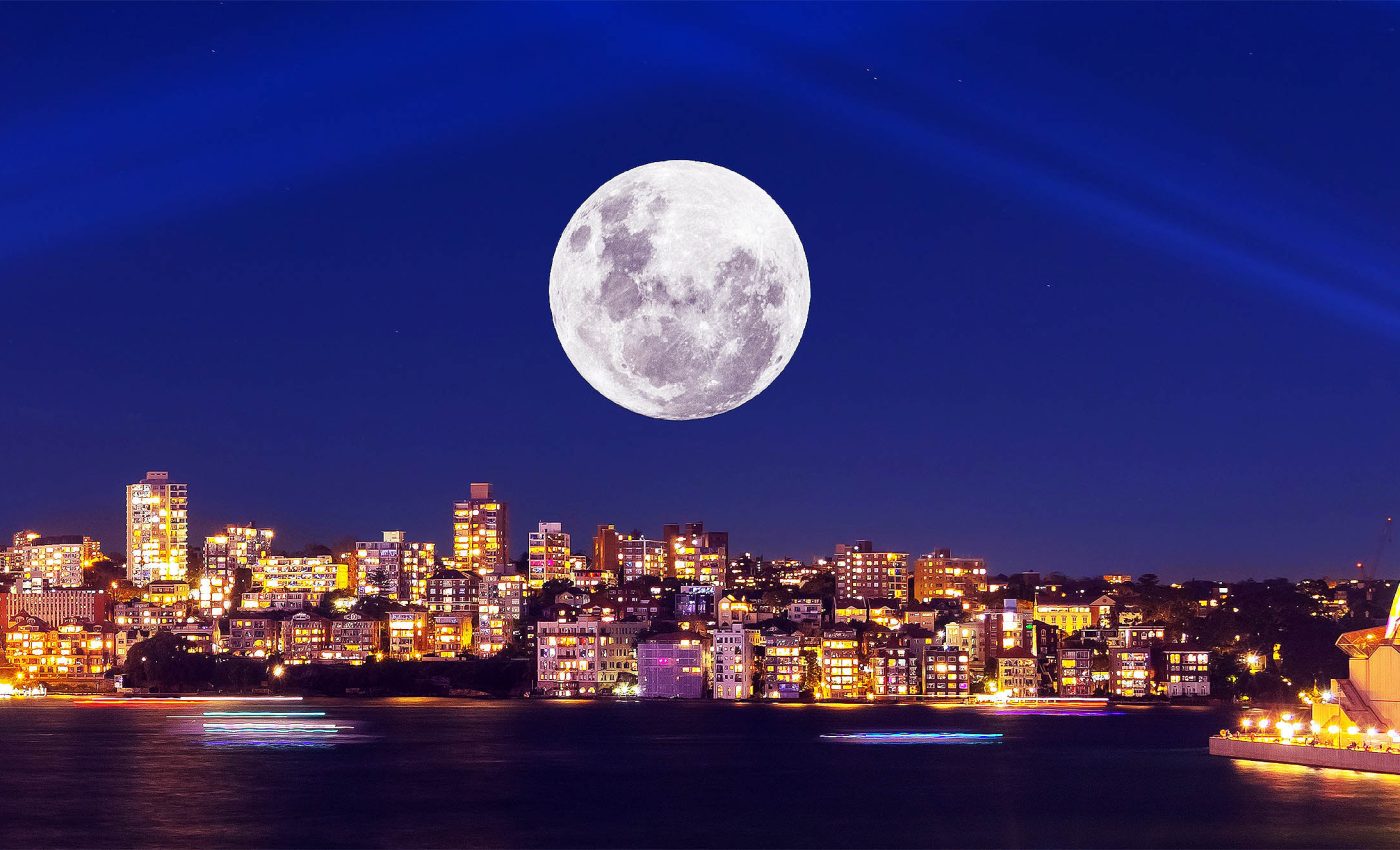
Tonight's rare 'supermoon blue moon' is the biggest and brightest of 2024
The heavens are getting ready to roll out a stunning red carpet for a rare “supermoon blue moon” that’s about to light up our skies.
This isn’t just any full moon; it’s set to outshine and outsize all the other moons we’ve seen this year, grabbing the attention of stargazers and casual viewers alike.
Make sure to look up on August 19, when the August full moon — lovingly called the ‘Sturgeon Moon’ — will sprinkle its brilliance across the twilight, lighting up the night with its enchanting glow.
This particular moon also goes by the “moon names” of the red, corn, green corn, barley, herb, grain, or dog moon; Raksha Bandhan or Rakhi Purnima; and Tu B’Av.
This supermoon will shine about 30 percent brighter than your average moonlit night, casting long shadows and creating a magical vibe for anyone lucky enough to catch it.
Worried about missing this incredible sight? No need! Over the next few months, the sky will host several of these amazing supermoons, each with its own unique charm.
Prime time to view supermoon
Our Sturgeon moon will reach its zenith at 2:26pm ET on August 19. Those located in the United States may not get a glimpse of it at this time. This is because our lone satellite will be on the other side of our home planet, Earth.
You can still feast your eyes on this celestial marvel at moonrise, which is slated to happen around 8:07 p.m. ET. And you can trust this timing – it’s straight from the Farmer’s Almanac, known for its reliability.
For spectators on the East Coast, the supermoon will arise in the east-southeastern skies. It will ascend about one-third of the way across the sky before taking a bow at approximately 7:00 a.m. in the west-southwest.
Supermoon: When and how?
If you find yourself pondering over why supermoons look so incredibly large and brilliant, allow us to let you in on the secret.
A supermoon comes into its own, appearing at its maximum size and brightness when it’s closest to the horizon. This happens just after moonrise or before moonset.
With the moon playing off against terrestrial objects like trees and buildings, an optical illusion is created that pumps up the moon’s size.
This spectacle takes place when the full moon is at ‘perigee,’ which is the point in its orbit when it’s its closest to Earth.
Supermoons scatter about 30 percent more light on our planet than the moon at its dimmest. This is because more of the sun’s rays bouncing off the moon’s surface reach us on Earth.
More supermoons coming up
In case you can’t make it for this event, there’s no reason to be upset. More stargazing opportunities are waiting in the wings.
After the Sturgeon moon, the next supermoons of 2024 are scheduled for September 18, October 17, and November 15.
It’s typical to be graced with supermoons three to four times per year, and they always appear in consecutive months.
This supermoon is also a “blue moon”
Even though it won’t actually look blue, the third full moon in a season with four full moons is called a blue moon.
The first time “blue moon” showed up in English was back in 1528. There’s some speculation about where the term comes from — some say it comes from an old English phrase meaning “betrayer moon,” since it messed up the dates for Lent and Easter.
Others think it might refer to those rare times when dust in the atmosphere makes the moon look blue. Since the 1940s, “blue moon” has also been used to describe the second full moon in a month that has two full moons.
Get set for the show
To make the most of this experience, find a spot with a clear view of the horizon, like a beach, hill, or open field. If you find yourself in an urban setting, darker skies offer a better view as light pollution can put a damper on the moon’s brightness.
To really delve into details like craters, think about bringing binoculars or a telescope. These tools will boost your ability to take in the moon’s beauty up close.
Carefully picking the right place and equipment will turn this into an unforgettable experience. It will let you forge a deeper connection with the marvels of the night sky.
Moonlight magic
Appreciating these celestial shows can be even more enjoyable once we understand the science behind the moon’s light. Moonlight isn’t generated by the moon itself. Instead, it’s sunlight reflecting off the moon’s surface.
This reflection can alter depending on the moon’s phase and position relative to Earth. This, in turn, influences how bright or dim the moon appears in our night sky.
For instance, during a supermoon, when the moon is at its perigee, the sunlight that reaches us is maximized due to the moon’s closeness to Earth.
This results in a breathtaking show that grabs attention worldwide. The interplay of light and distance creates an ever-evolving sight that continues to spark scientific interest and artistic inspiration.
Dance between Earth and moon
The distance between Earth and the moon is always changing because of the moon’s elliptical orbit around our planet. This fluctuation can range up to around 226,000 miles.
When the moon is nearest to Earth, it appears larger and brighter, and when it’s farthest, it appears smaller and dimmer. If the moon’s orbit were a perfect circle, we would not see these changes in size and brightness during a full moon.
Understanding this phenomenon sheds light on the dynamic relationship between Earth and its natural satellite, showing us the meticulous ballet of celestial bodies in our solar system.
—–
Like what you read? Subscribe to our newsletter for engaging articles, exclusive content, and the latest updates.
Check us out on EarthSnap, a free app brought to you by Eric Ralls and Earth.com.
—–













